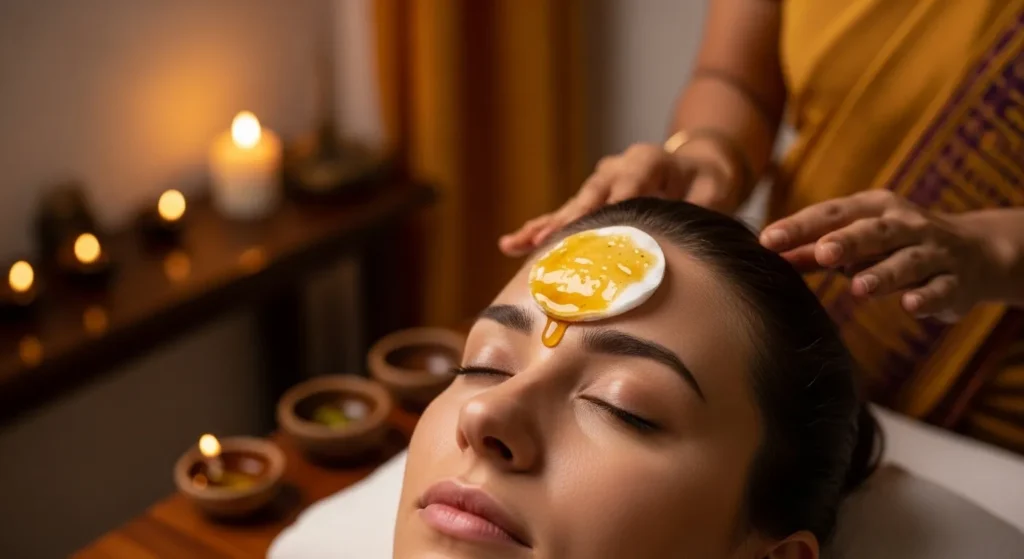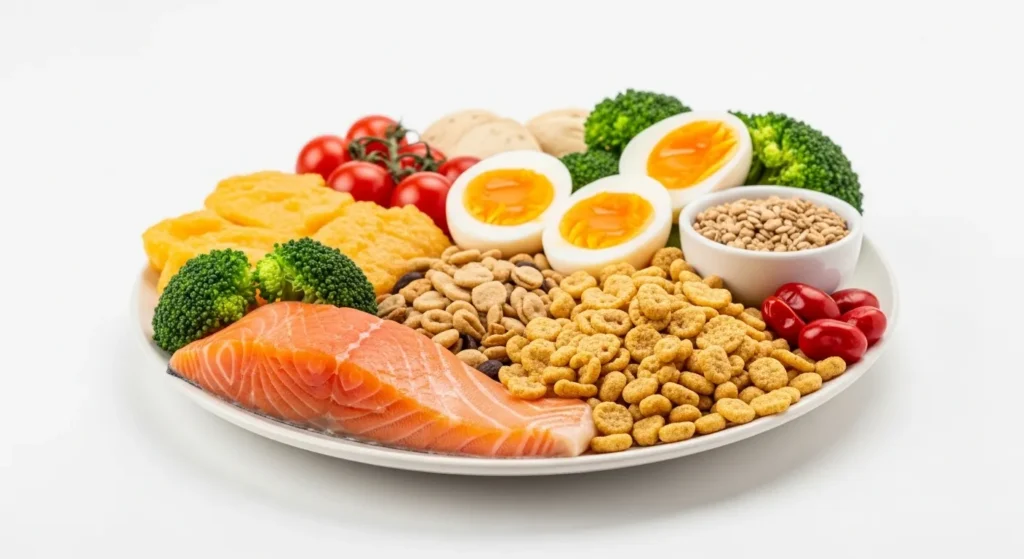Struggling with persistent hair fall despite using oils and shampoos? Pichu Ayurveda for hair loss therapy offers a time-tested Ayurvedic solution to nourish the scalp, reduce shedding, and promote healthier hair naturally.
Rooted in traditional Indian medicine, this oil-based treatment helps balance scalp imbalances and restore vitality. In this post, you’ll learn how Pichu works, the best oils to use, expert advice, and step-by-step guidance to safely try it at home or with a practitioner.
What Is Pichu (Shiro Pichu)?

Pichu, also known as Shiro Pichu, is an Ayurvedic scalp treatment where a medicated cotton pad soaked in herbal oil is placed on the head to allow deep absorption into the scalp tissues.
Origins & Meaning
- “Shiro” means head, and “Pichu” refers to a soaked cotton pad.
- It is one of the Murdhni Taila therapies in Ayurveda—head-based oil applications meant to promote mental and physical well-being.
Traditional Ayurvedic Context
Pichu is prescribed for Vata and Pitta imbalances in the head region. According to classical Ayurvedic texts, it’s beneficial in:
- Chronic headaches
- Neurological issues
- Hair fall and premature greying
- Insomnia and stress
It is typically performed under the guidance of an Ayurvedic therapist using warm, herbal oils suited to the individual’s dosha.
How Pichu Works for Hair Loss
Mechanism: Nourishing the Scalp and Calming the Doshas
Pichu delivers continuous warmth and medicinal oil to the scalp, which:
- Soothes nerve endings
- Improves blood circulation
- Deeply nourishes hair follicles
- Helps balance aggravated Vata and Pitta, both of which are linked to hair loss
Benefits for Hair Fall and Scalp Health
When performed consistently, Pichu may:
- Reduce hair shedding
- Prevent premature greying
- Strengthen hair roots
- Relieve scalp tension or itchiness
- Support natural shine and softness
Many users report a noticeable difference in scalp sensitivity and hair texture after a few sessions.
Scalp Health and Circulation
By maintaining warmth and prolonged contact, oils can:
- Unclog hair follicles
- Moisturize dry scalps
- Stimulate Marma points (vital energy centers on the scalp)
Therapist-Led vs. DIY at Home
Proper Procedure and Tools
A traditional Pichu session involves:
- Warming the chosen Ayurvedic oil (never boiling).
- Soaking sterile cotton or gauze in the oil.
- Placing it directly over the crown area (or full scalp).
- Covering with a cloth or cap to retain warmth for 30–60 minutes.
Choosing the Right Oils
Selecting the right oil depends on your dosha and hair/scalp condition:
| Oil | Best For |
|---|---|
| Bhringamalakadi Taila | Premature greying, hair strengthening |
| Kuntalakanti Taila | General nourishment, frizz control |
| Neelibhringadi Oil | Intense repair, dandruff |
| Brahmi Oil | Stress-related hair loss |
Step-by-Step: Home Application
- Wash your hair the day before with a mild herbal shampoo.
- Warm the oil slightly in a bowl.
- Dip a sterile cotton pad, squeeze out excess.
- Place on the scalp, especially crown or thinning areas.
- Cover with a shower cap or cloth.
- Leave on for 30–60 minutes.
- Gently massage before removal, then optionally rinse.
Repeat 2–3 times per week for best results.
Treatment Timeline & Frequency
Session Duration
- A typical Pichu treatment lasts 45–60 minutes.
- In therapeutic settings, some treatments go up to 2–3 hours, or even overnight in rare cases.
Course Frequency
- For mild hair loss: 2–3 times weekly for 3–4 weeks
- For advanced hair thinning: Daily for 7–21 days under supervision
- Maintenance: Weekly sessions for ongoing nourishment
Comparison With Other Ayurvedic Hair Loss Therapies
Pichu vs. Shiro Abhyanga
- Shiro Abhyanga: Oil massage of the scalp with hands
- Pichu: Static warm oil soaking method
- Pichu offers deeper absorption, while Abhyanga improves circulation more quickly.
Pichu vs. Shiro Dhara
- Shiro Dhara: Continuous oil stream over forehead (Ajna Chakra)
- Pichu: Targeted scalp soaking
- Pichu is more localized and practical for hair-specific concerns.
Advantages and Limitations
| Therapy | Best For | Limitations |
|---|---|---|
| Pichu | Scalp nourishment, hair root care | Requires time & preparation |
| Shiro Dhara | Stress, insomnia, hormonal imbalances | Not hair-focused |
| Shiro Abhyanga | Dandruff, circulation | May not penetrate deep |
Pro Tips & Best Practices
- Use warm oil, not hot—always test on your wrist first.
- Do Pichu at night for better absorption and relaxation.
- Combine with nasya (nasal drops) and yoga for enhanced benefits.
- Maintain a Vata-balancing diet: warm, moist, nourishing foods.
- Avoid screen time or loud environments during Pichu—it’s also a mental detox.

FAQs
What’s the best oil for hair loss in Pichu?
Bhringamalakadi and Neelibhringadi oils are top choices for hair regrowth and strengthening.
How long should I leave the Pichu on my scalp?
Typically 30–60 minutes. For severe conditions, longer under expert supervision.
Can Pichu cause any side effects?
Generally safe. But those with scalp infections, open wounds, or very oily skin should consult a professional first.
Can I combine Pichu with shampoo or other treatments?
Yes. Avoid harsh shampoos. Use mild, herbal ones 24 hours post-treatment.
Take Your Next Step
Ready to nourish your scalp and restore your hair naturally?
Book a consultation with Dr. Rana Irfan in Islamabad to explore holistic therapies like Pichu Ayurveda hair loss treatment. Get expert guidance, personalized care, and proven results—rooted in tradition, backed by science.
Pichu is more than an oil treatment—it’s a healing ritual that brings balance to your body and mind while targeting the root causes of hair loss. Whether you’re facing stress-induced shedding or premature greying, Pichu offers a gentle, effective path to stronger, healthier hair. Start your journey toward holistic scalp wellness today.
